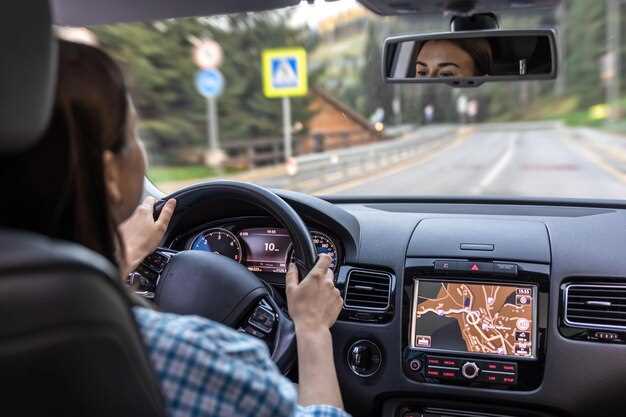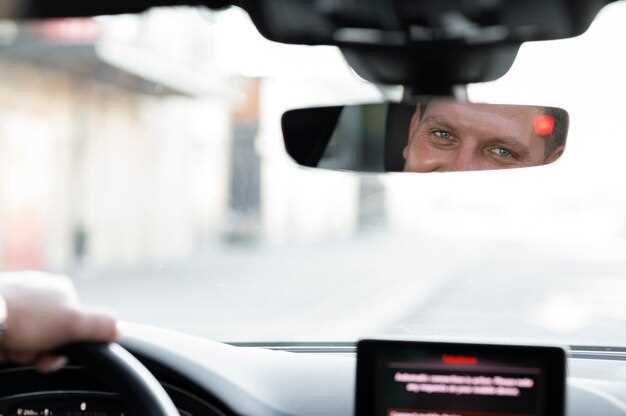
Are backup cameras really safer?

In recent years, the integration of backup cameras in vehicles has become a standard feature aimed at enhancing driver safety. These cameras are specifically designed to assist drivers during parking maneuvers, providing a clearer view of the area behind the vehicle. With the rise in urban driving and tighter parking spaces, the importance of having a reliable visual aid cannot be overstated.
One of the most significant advantages of a backup camera is its ability to minimize blind spots, which are typically problematic when reversing. Many accidents occur due to difficulties in perceiving obstacles behind the vehicle, from pedestrians to stationary objects. By utilizing a camera, drivers gain an enhanced perspective, allowing for safer decision-making and potentially preventing collisions.
The technology behind these cameras has advanced significantly, offering features such as grid lines for improved parking accuracy and wide-angle views to capture a larger area. As a result, drivers can navigate into tight spaces more confidently. However, while backup cameras are an essential tool, they are not a substitute for attentive driving. The effectiveness of this technology relies on the driver’s ability to combine visual information from the camera with their own situational awareness.
Impact of Backup Cameras on Reducing Rear-End Collisions

Backup cameras play a significant role in enhancing safety during parking maneuvers, particularly in preventing rear-end collisions. These devices provide drivers with a real-time visual representation of the area behind their vehicles, which is crucial for assessing the proximity of obstacles and pedestrians that may not be visible through standard mirrors.
Research indicates that vehicles equipped with backup cameras demonstrate a marked decrease in incidents during reversing. The clarity and breadth of the camera’s field of view allow drivers to detect potential hazards sooner, reducing the likelihood of accidents. Studies show that cars fitted with such cameras can lower the risk of rear-end collisions by increasing awareness while reversing.
Moreover, the integration of audio alerts that accompany backup camera signals further enhances driver responsiveness. This auditory feedback, coupled with visual cues, significantly reduces the chances of miscalculations during parking or exiting tight spaces. By alerting drivers to nearby objects or impending obstacles, these systems facilitate safer maneuvering in complex environments.
In conclusion, the adoption of backup cameras contributes positively to vehicular safety. Their capacity to provide essential visual information enhances drivers’ ability to perform safe parking maneuvers, thereby lowering the overall number of rear-end collisions.
Practical Tips for Utilizing Backup Cameras During Parking

Using a backup camera can significantly improve your parking experience and enhance overall vehicle safety. Here are some practical tips to make the most out of this technology while parking:
1. Familiarize Yourself with the Display: Before relying solely on your backup camera, spend some time getting to know its features. Understand how the guidelines work and which markers indicate distance. This familiarity will help you gauge proximity to nearby obstacles accurately.
2. Always Check Your Surroundings: Although a backup camera provides a clear view behind your vehicle, it should not replace your awareness of surroundings. Use mirrors and glance over your shoulder to ensure there are no blind spots that the camera might miss.
3. Use the Grid Lines Effectively: Many backup cameras are equipped with grid lines that help you navigate while parking. Use these lines to align your vehicle within the parking space and avoid encroaching on adjacent spots. Adjust your position according to these visual cues for optimal parking.
4. Maintain a Steady Speed: When reversing, maintain a slow and steady pace. This will give you more time to react to any obstacles and allow the backup camera to provide a clearer view. Quick, abrupt movements can make it challenging to assess distances accurately.
5. Keep the Camera Clean: Dust, dirt, and water can obstruct the camera’s view, making it difficult to see clearly. Regularly clean the camera lens to ensure you have the best visibility when backing up. A clean lens enhances safety and improves the camera’s performance.
6. Practice in Wide Open Spaces: If you’re new to using a backup camera, practice in various parking scenarios, especially in wide open spaces. This can help you grasp how the camera works and boost your confidence when parking in tighter spots.
7. Combine Tools: Use the backup camera in conjunction with your vehicle’s other safety features, such as parking sensors and alerts. This combination can provide a comprehensive assessment of your surroundings, allowing for safer and more accurate parking.
By following these tips, you can effectively utilize your backup camera to enhance safety during parking, reducing the likelihood of accidents and making the process smoother.
Comparative Analysis: Backup Cameras vs. Traditional Rearview Mirrors
In modern vehicles, backup cameras have emerged as a crucial technology for enhancing safety during parking maneuvers. Unlike traditional rearview mirrors, which rely solely on the driver’s line of sight, backup cameras provide real-time video feed of the area directly behind the vehicle. This key difference significantly impacts the driver’s ability to detect obstacles and pedestrians while reversing.
One of the primary advantages of backup cameras is their wide-angle perspective. They can cover blind spots that rearview mirrors may miss, particularly on larger vehicles or SUVs. As a result, drivers are less likely to encounter unexpected obstacles during parking. In addition, many backup camera systems come equipped with guidelines that assist drivers in judging distances and angles, further improving parking accuracy.
On the other hand, traditional rearview mirrors have been a staple in vehicles for decades. While they may provide a limited view of the rear area, they are reliant on the driver’s judgment and visibility conditions. Factors such as weather, glare from sunlight, or the vehicle’s shape can hinder visibility through rearview mirrors, increasing the risk of accidents.
While both systems have their merits, the integration of backup cameras into vehicle designs has shown to reduce accidents related to reversing. Studies suggest that vehicles equipped with this technology experience lower rates of collisions while backing up compared to those solely relying on mirrors. The visual aid enhances driver confidence and situational awareness during parking, making it a superior choice for enhancing vehicle safety.
In conclusion, the comparative analysis indicates that backup cameras offer significant advantages over traditional rearview mirrors in terms of safety and convenience. By providing an unobstructed view of the rear area and incorporating smart features for better navigation, backup cameras are proving to be an essential tool for drivers during parking activities.